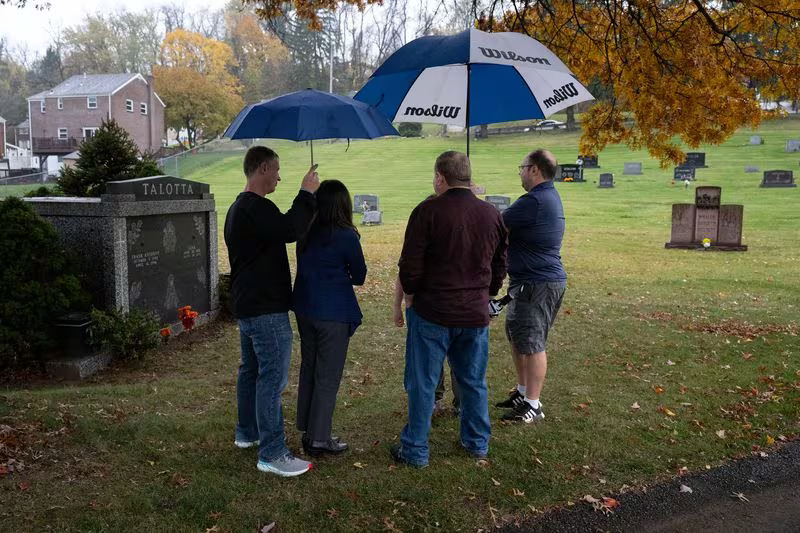"THE LITERATURE IS VERY CLEAR: People in jail are dying, and they should not be dying,” researcher and UCLA Professor Dr. Terence Keel said.
Each year, an untold number of people die in jails across the country. Keel joined Pulitzer Center grantees Brittany Hailer and Joshua Vaughn for a webinar to discuss in-custody deaths and inconsistent records in jails and prisons in the United States.
“There is not a single free standing record that could allow you to tell with precise accuracy how many people died in custody, in 1996 or 2017,” Keel said.“Every aspect of someone’s [life while] incarcerated is controlled: what they eat, what they drink, when they sleep, who they visit, what medications they take or don't take. Why not the records?”
Vaughn, who reports for PennLive, and Hailer, who reported for the Pittsburgh Institute for Nonprofit Journalism during their investigation, built Pennsylvania's first-ever database of in-custody deaths. Together, they patchworked inconsistent systems to identify deaths in custody and their circumstances.
“You have to be embedded in this place for this long to get phone calls from people who are inside the jail,” Hailer said. “Some of it literally was because the incarcerated [people] called us. Or the family reached out to us. There's no real magic paperwork combination that you can do if the government doesn't want to report something to you.
“And that makes you think, how many people are we missing? How many people are in a town where there isn't someone they trust or a journalist looking into something, and they don't know […] that they are allowed to ask questions and look for answers?”
Additionally, many employees within jails are afraid to speak out for fear of retribution or losing their jobs. Hailer, with the Reporters Committee for Freedom of the Press, sued Allegheny County Jail on First Amendment claims. The case resulted in a landmark settlement requiring the jail to revise its prior restraint policy.
Public record access varies by state and often depends on the individual interpretations of the law by local officials. Hailer and Keel have had to resort to legal battles for access to prisoner autopsy reports as well as other records in Pennsylvania and California.
Once obtained, there is still no guarantee that records will be informative, or even complete. Much of the examination is left to the discretion of coroners and medical examiners, creating “fragmented and wildly inconsistent records,” Keel explained.
Jails also frequently modify bail and release prisoners from custody just before death to avoid reporting them as in-custody deaths and footing medical bills.
“The system operates such that law enforcement have legal immunity; [They] can take people's lives and not be held accountable for it, whether that's in the street or in a jail system,” Keel said. “In addition to that, when people die under their watch, there's a medical exam or a coroner system that isn't telling us the truth about why these people are dying. And then, if you want to get records about these deaths, there's all these obstacles to getting these records.
So when you tally that up, it's a system that can take people's lives and be held completely not accountable for it. That's a terrifying system.”
Vaughn attributes some of the lack of reporting to a lack of communication during transitions of responsibilities between federal departments. In 2020, less than half of jail deaths were properly reported to the federal government. It has improved slightly, with their 2022 investigation discovering at least 65 deaths, 40 of which were reported as required.
“The Bureau of Justice Assistance is basically allergic to using its enforcement mechanisms,” Vaughn said. “I'm not a hundred percent sure if they've ever revoked federal grant funding for any of the programs […] [which is their primary] enforcement mechanism for a bunch of the federal oversight programs.”
On the state level, there are no enforcement mechanisms to hold carceral facilities accountable. However, some states are beginning to pass measures, such as Texas’s policies mandating death reviews, and California’s appointment of a division to review in-custody deaths for additional oversight.
“I think we're gonna find ourselves in the best position if we have an established government body whose job it is, by legal mandate, to investigate all deaths that take place in custody. Then, in addition to that, a third, free-standing investigative body that reviews those official records,” Keel said.
There's a lot of discretion given to medical examiners that I think would be revealed as problematic if there was a secondary body that reviewed their work. Right now, Brittany, Joshua, myself and others are the ones doing all this.”
“Coroners are an independently elected office in Pennsylvania,” Vaughn said. “If the system is working the way it's supposed to, they should be acting as an independent check on the other parts of our local government. [They should be] only responsible to the constituents, not to anyone else in the county government, not anyone running the jail, not to the commissioners. We need to be paying attention to those races […] due to how much power they have in oversight.”
On April 2, 2024, Hailer and Vaughn shared the findings of their database in a Pennsylvania Senate public hearing on the lack of reliable information surrounding deaths in correctional institutions.










